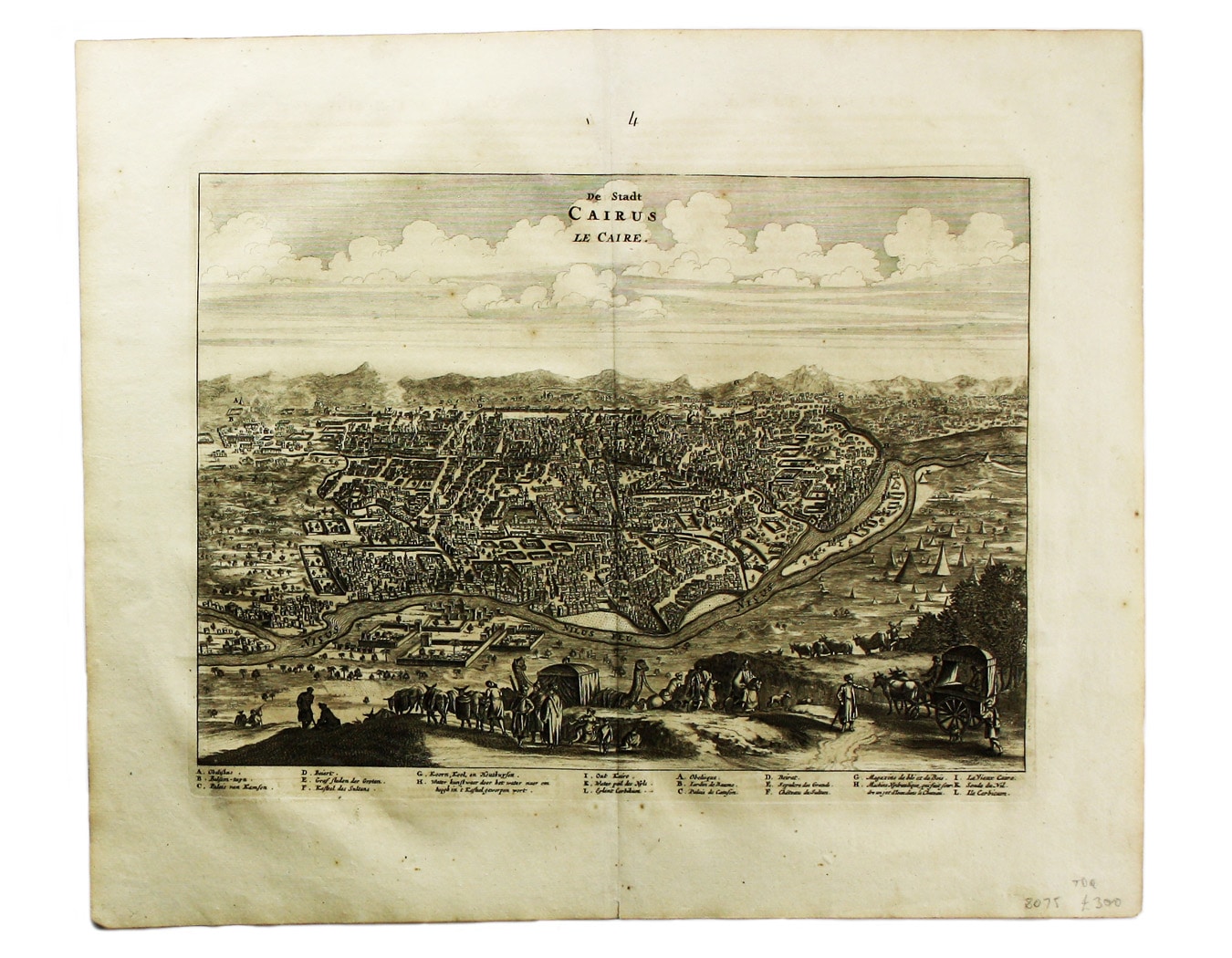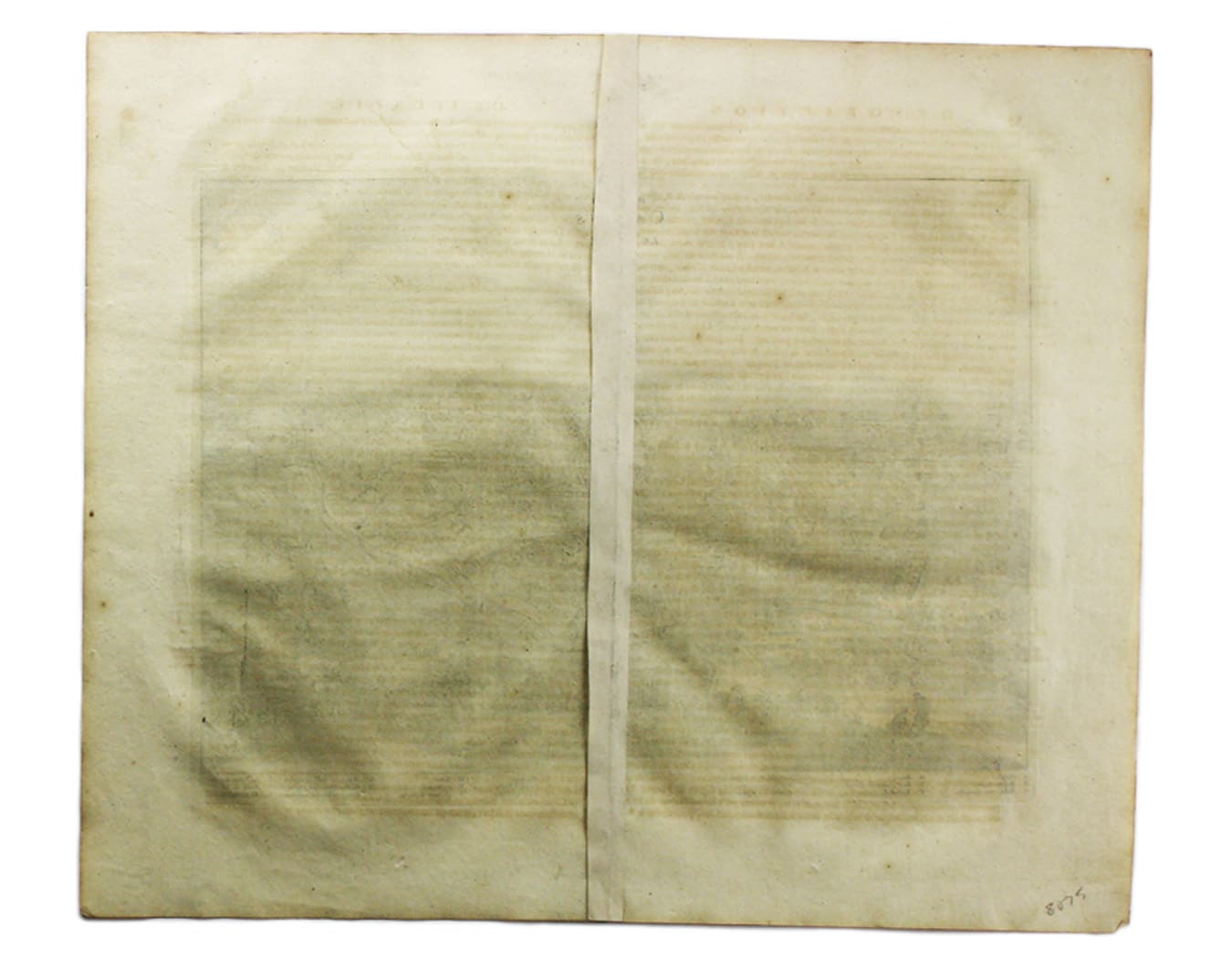
Dapper’s Plan of Cairo
SKU: 8075
Title:
Dapper’s Plan of Cairo
Date of publication:
Printed Measurement:
Colour:
Mapmaker:
Dapper’s plan of Cairo follows Matteo Pagano’s magnificent 21 sheet wall map, published in Venice in 1549.
Cairo was one of the great trading centres of the early modern world, and Venice was Cairo’s principal European trading partner. Most western map-makers, including Braun & Hogenberg, used Pagano as a base map until Pierre Jacotin surveyed Cario for Napoleon during the French occupation 250 years later. Read more
Dapper takes Pagano's viewpoint, from the west bank of the Nile, with the pyramids of Giza to the southwest, on the right of the map. There are scenes of daily life in the foreground: laden donkeys, carts, a palanquin suspended between camels, and exotically robed and turbanned figures. The horizon is perhaps closer to Braun & Hogenberg’s, though more mountainous, but there are differences between Dapper and his predecessors. The pyramids are shown rising from a plain, rather than perched on flat-topped hills, and they are if anything more numerous. There has also been an attempt to depict urban sprawl: buildings now reach the city wall, covering a hilly area to the south, and indeed there has been development beyond, and on the periphery to the north of the city. Whether this was pure conjecture or based on recent travel accounts is unclear, but Dapper was not content with a straight copy of a century old map.
Olfert Dapper (1636-1689) was a Dutch physician and scholar who devoted most of his life to geographical studies without ever leaving his home town of Amsterdam. Using the most reliable eye-witness accounts and his own extensive library of travel books he composed authoratitive and entertaining finely-illustrated works on Asia, Africa and America. His Naukeurige Beschrijvinghe Der Afrikaensche was first published in Dutch in 1668, in German in 1670 and in French in 1686, and it was used by John Ogilby (1600-1676) as the basis for his Africa, the best account of the continent available in English at the time, using many of the same maps and views.
Condition & Materials
Copper engraving, 24.5 x 32 cm, black and white, blank verso. Read less


